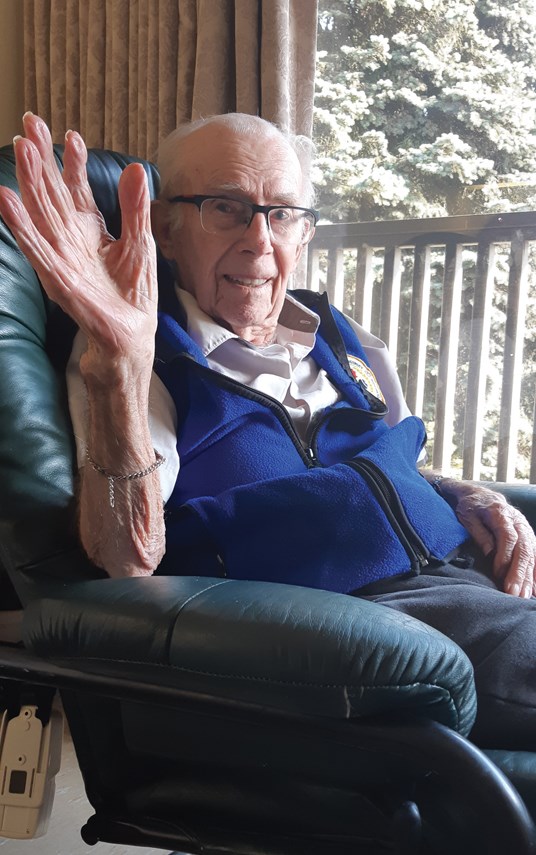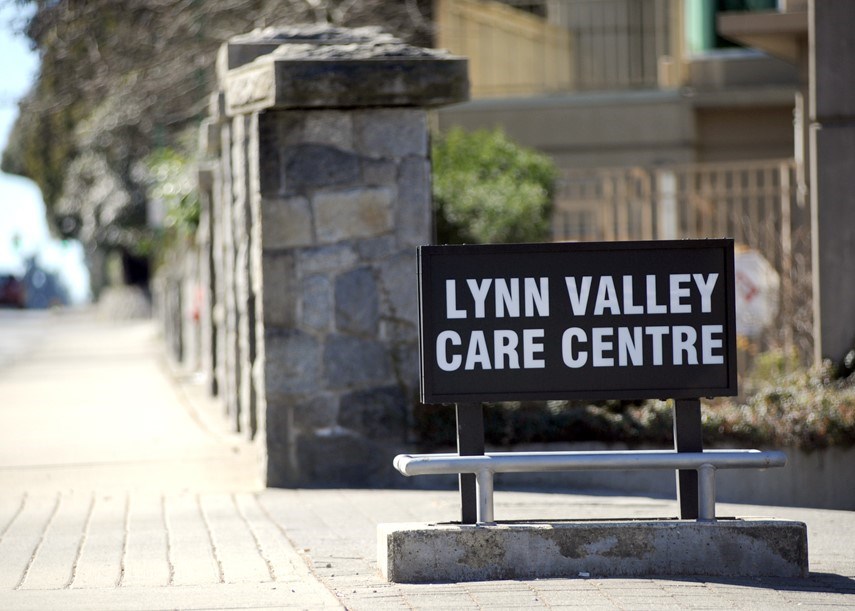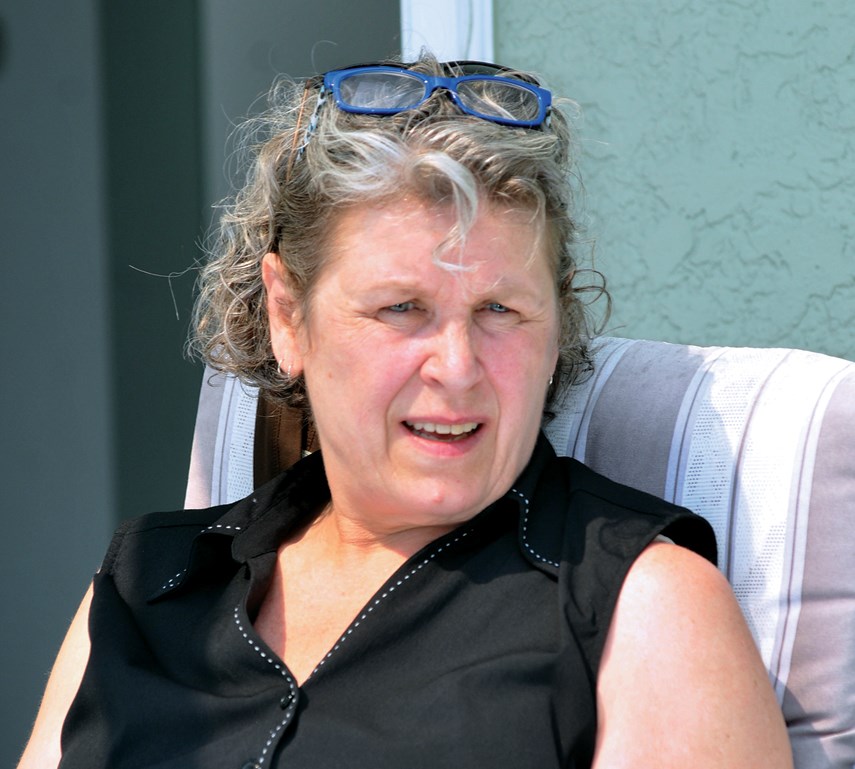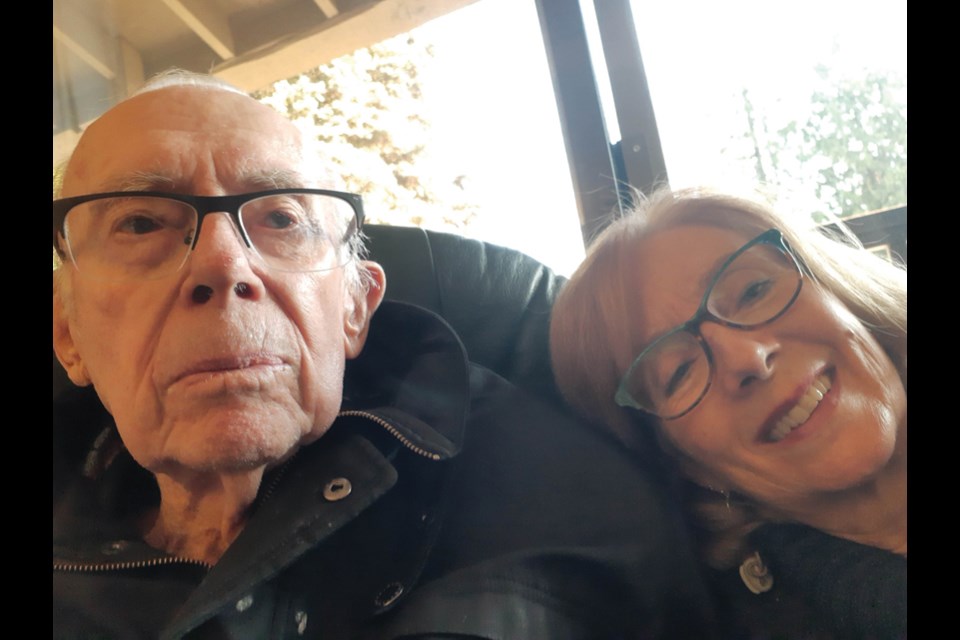Back in the spring, when the first wave of COVID-19 tore through North Vancouver’s Lynn Valley Care Centre, Debbie Drew and her sister Deanna Harlow wondered if their elderly father would survive the outbreak.
Graham Drew, 97, was one of the many seniors who contracted COVID-19 inside the care home – the first one in Canada to suffer an outbreak.
Drew was lucky – he recovered from the illness.
But since then, his two daughters have been left wondering if COVID-19 itself was the worst part of the pandemic.
Restrictions on family visits, even before the recent two-week clampdown on Lower Mainland households, have dramatically curtailed the way the two women have been able to see their father, who lives with dementia. The result has been a fraying of their dad’s connection to them at a time when his physical and mental condition is failing, said Drew.
“Even though he’s a miracle man and made it through COVID, this year has been very hard on him. His ailments, and his disabilities are becoming more challenging,” she said. “And I can see him really declining.”
Since June, when care homes in B.C. were reopened to family visits, both the quality and frequency of that time together has been a far cry from what family members say they need.
In a report released this month, B.C’s seniors advocate Isobel Mackenzie described the visit restrictions as having a profound and negative effect on both residents and their families.
“The stories we heard have made it clear that residents need to spend more time together with the people they love and they cannot wait another year or more until this pandemic is over for this to happen,” Mackenzie wrote.
Most visits at Lynn Valley Care Centre happen in public areas, behind a Plexiglas screen, said Debbie Drew – making it next to impossible for residents who are hard of hearing to understand what is being said.
Drew – the one designated family visitor allowed to see her dad – adds that the lack of physical touch has also been very difficult.
“With my dad, he takes his hand and he touches his head and he kind of throws the kiss through the Plexiglas,” she said.

That kind of experience is common, according to Mackenzie.
“When the visit restrictions were amended at the end of June, many family members thought they would once again take up their role as a vital care partner for their loved one,” she wrote. But even months after visit restrictions were relaxed, Mackenzie’s survey of more than 13,000 residents and family members found the majority of visits have been only once per week or less and many have been limited to 30 minutes or less.
In addition, only two out of ten are were able to take part in unobserved, private visits, wrote Mackenzie.
For most people, life will eventually get back to normal after the pandemic, wrote the seniors advocate, but “for residents of long-term care, however, this tomorrow may never come.”
Currently, most residents fear death from loneliness more than they fear COVID-19, wrote Mackenzie.
Jennifer Knibbs and her sister Stephanie Loewen are part of another family who lived through the outbreak at Lynn Valley Care Centre only to find their mom’s quality of life declining in the aftermath.
They originally chose the care home for their 88-year-old mom because it was so close to them, said Knibbs. Prior to COVID-19, both daughters were frequent visitors.
When the care centre outbreak hit in March, their mom also contracted COVID-19. “We just had to kind of sit by the sidelines and wait and watch and see what happened,” said Knibbs.
They were grateful when their mom recovered from her illness relatively unscathed. They waited four months for a visit, only to have it take place in a busy area of the lobby behind a Plexiglas screen.
“She could not hear a word we said. So it was very frustrating,” said Knibbs. “There was no privacy to have a family conversation of any sort ... It was very sad for us to meet her this way.”
Visits remained rationed until earlier this month, when families at the care home were told all face-to-face visits were being suspended because of concerns about the surge in COVID-19 numbers, even though there was no COVID-19 outbreak at the home. Instead, families were told they could sign up for a virtual call – which in Knibbs’ case came in the middle of her work day.

Knibbs said she can tell her mom is lonely. Because her mom can’t hear, and staff does not ensure her hearing aids are in place, Knibbs said she hasn’t been able to tell her mom why she and her sister can’t come and visit.
“She says, ‘Well when you’re not busy, come and visit me.’ And we tried to explain it to her, but she can’t hear us,” said Knibbs.
That experience is common, wrote Mackenzie, who found more than 85 per cent of seniors in care homes needed help to use a phone or other kinds of technology like Zoom or FaceTime.
Meanwhile, the rate of antipsychotic use for residents in care went up seven per cent during the pandemic, according to Mackenzie, and assessments show “troubling trends of unintended weight loss and worsening of mood” among residents.
Kathie Boyd’s mom is another resident who survived the Lynn Valley Care Centre COVID-19 outbreak. But more recently, Boyd said her mom, who also has dementia, has been losing weight and was recently referred for palliative care.
Boyd said she doesn’t know how much of her mom’s condition is a case of losing her will to continue. This week, families were informed in-person visits will be allowed again at the care home. Boyd fears that has come too late for her mom.

“I haven’t seen my mom in about four weeks,” she said. “She’s nearing the end of her life and I still haven’t been approved to come and visit her.”
“It’s hard to know what she’s feeling,” added Boyd. “I have to think she’s longing for someone to be tender with her.”
Boyd questions the quality of life that care home residents are getting while being shut away over fears about contracting COVID-19.
“There’s an awful lot of residents like my mom who would definitely say, ‘Why are you keeping me alive? To be so lonely.’”



